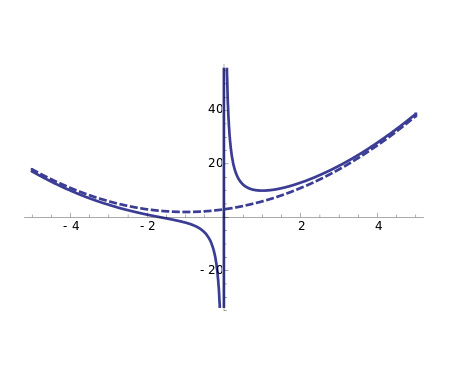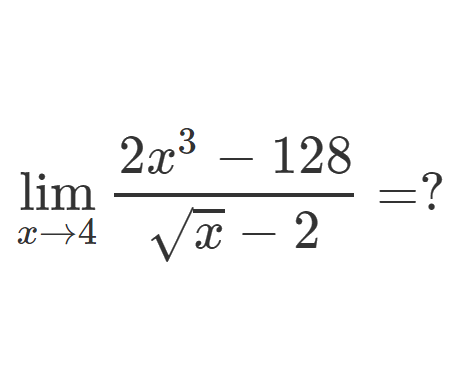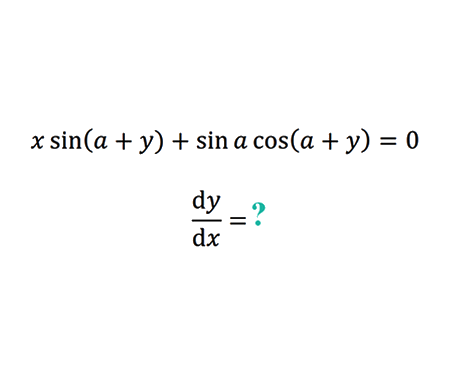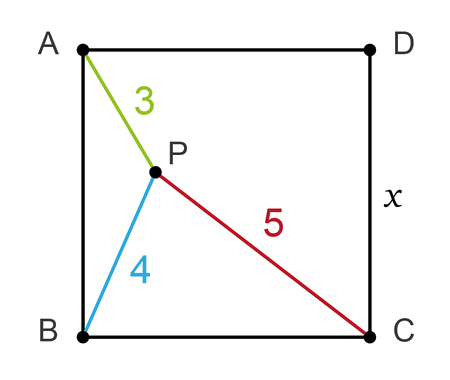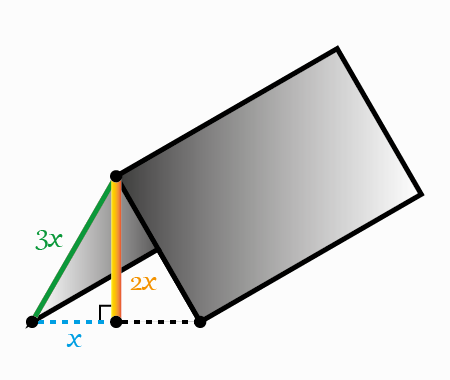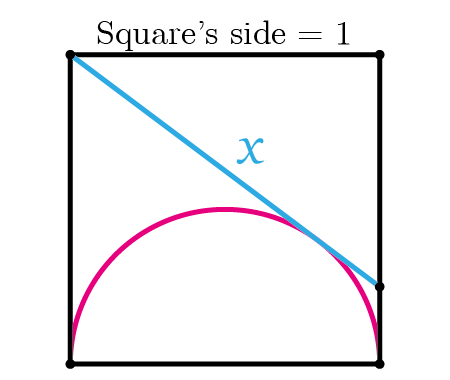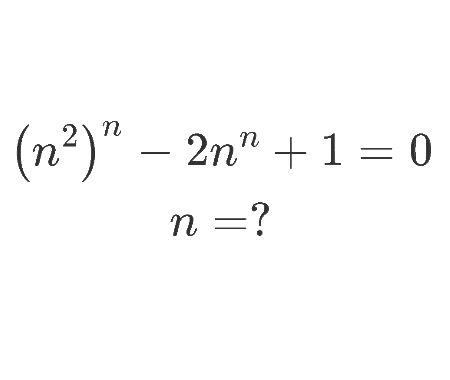Determine the square's side x
Home -> Solved problems -> Determine the square’s side x
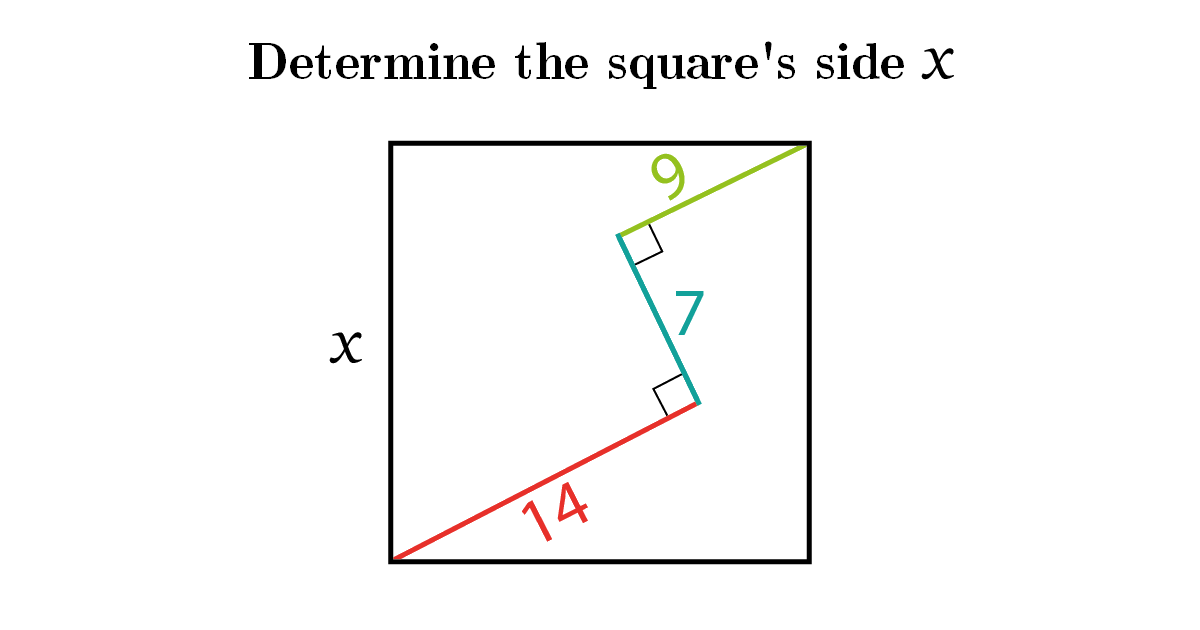
Solution
To start, let’s add sections like it’s shown in the next figure

\[2 x^{2}=(14+9)^{2}+7^{2}\]
\[=23^{2}+7^{2}\]
\[=578\]
\[x^{2}=289\]
\[\huge \Rightarrow x =17\]
Home -> Solved problems -> Determine the square’s side x
Every problem you tackle makes you smarter.
↓ Scroll down for more math problems↓
↓ ↓
↓ ↓
↓ ↓
Prove that the function \(f(x)=\frac{x^{3}+2 x^{2}+3 x+4}{x}
\) has a curvilinear asymptote \(y=x^{2}+2 x+3\)
Why does the number \(98\) disappear when writing the decimal expansion of \(\frac{1}{9801}\) ?
↓ ↓
↓ ↓
↓ ↓
↓ ↓
↓ ↓
↓ ↓
↓ ↓
↓ ↓
↓ ↓
↓ ↓
↓ ↓
↓ ↓
if we draw an infinite number of circles packed in a square using the method shown below, will the sum of circles areas approach the square's area?
↓ ↓
↓ ↓
↓ ↓
↓ ↓
↓ ↓
Home -> Solved problems -> Determine the square’s side x














